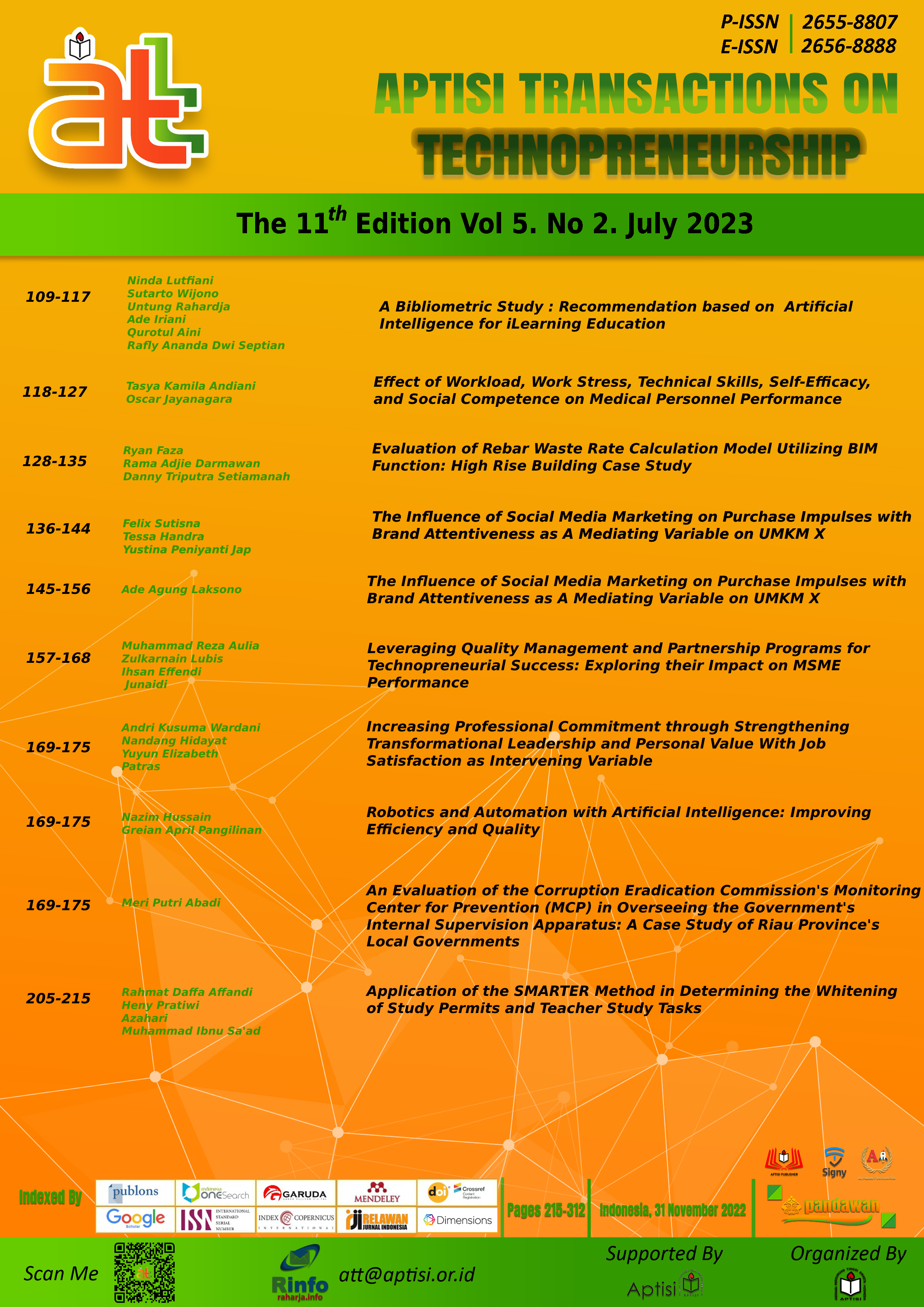Evaluation of Rebar Waste Rate Calculation Model Utilizing BIM Function: High Rise Building Case Study
Abstract
The process that has the potential to generate construction waste is a construction operational process so that in this process it is necessary to make efforts to carry out waste control in real-time as a form of effort by the construction industry to play a role in suppressing waste production. BIM is one of the supporting tools for project productivity whose function can be used to evaluate the level of construction waste, especially rebar waste which is one of the source materials for construction waste. The purpose of this study is to test the modeling of the calculation of the rebar waste rate utilizing the function of the BIM so that it can be used as an alternative tool for evaluating the level of waste in real-time. The calculation modeling obtained from previous research was successfully tested on a case study of a high-rise building project and obtained the rebar waste rate at a certain time in accordance with the progress of work in the project site. From this research, it can be concluded that the calculation modeling can be carried out on high-rise building projects.
Full text article
References
L. Fitri, J. U. D. Hatmoko, and F. Hermawan, “Managing construction waste in developed countries: Lessons learned for Indonesia,” in IOP Conference Series: Earth and Environmental Science, 2019, vol. 366, no. 1, p. 12016.
R. F. Prasetyo and D. Pontan, “Control Of Rebar Waste Rate Using Building Information Modelling: A Case Study Of Suspended Road Structure”.
S. Nagapan, I. A. Rahman, A. Asmi, A. H. Memon, and R. M. Zin, “Identifying Causes of Construction Waste –Case of Central Region of Peninsula Malaysia,” Int. J. Integr. Eng., vol. 4, no. 2, 2012.
Z. Wu, T. W. Ann, L. Shen, and G. Liu, “Quantifying construction and demolition waste: An analytical review,” Waste Manag., vol. 34, no. 9, pp. 1683–1692, 2014.
H. Harfizar, M. Mulyati, and M. A. Fikri, “Design Of Geographic Information Systems Monitoring Waqf At The Cikupa Sub-District Religious Affairs Office,” Aptisi Trans. Manag., vol. 3, no. 2, pp. 131–141, 2019.
N. Zaini, A. A. Zaini, S. D. Tamjehi, A. W. Razali, and H. C. Gui, “Implementation of Building Information Modeling (BIM) in Sarawak Construction Industry: A Review,” in IOP Conference Series: Earth and Environmental Science, 2020, vol. 498, no. 1, p. 12091.
D. Olsen and J. M. Taylor, “Quantity take-off using building information modeling (BIM), and its limiting factors,” Procedia Eng., vol. 196, pp. 1098–1105, 2017.
R. F. Prasetyo, “Identifikasi Efektifitas Faktor Pada Proses Kerja Engineering Kontraktor di Proyek Konstruksi Secara Jarak Jauh di Masa Pandemi Covid-19,” Indones. J. Constr. Eng. Sustain. Dev., vol. 3, no. 2, pp. 97–103, 2020.
I. M. Pertiwi, F. S. Herlambang, and W. S. Kristinayanti, “Analisis Waste Material Konstruksi Pada Proyek Gedung (Studi Kasus Pada Proyek Gedung Di Kabupaten Badung),” J. Simetrik, vol. 9, no. 1, pp. 185–190, 2019.
Y. Ulfiiyati and S. A. Hardiyanti, “Optimasi Waste Besi Pada Pier Median Jalan Tol Jakarta–Cikampek 2 Elevated Dengan Program Linear,” J. Rekayasa Sipil dan Lingkung., vol. 5, no. 1, pp. 58–66, 2022.
I. A. P. S. Mahapatni and I. K. I. Juliana, “ANALISIS WASTE LEVEL DAN WASTE COST BEKISTING DAN PEMBESIAN PADA PEKERJAAN STRUKTUR PROYEK KONSTRUKSI,” Widya Tek., vol. 17, no. 01, pp. 74–82, 2022.
S. Purnama, C. S. Bangun, A. R. S. Panjaitan, and S. T. Sampoerna, “The Effect Of Digitalization On Culinary Msmes On Increasing Sales Turnover During Covid 19 Pandemic,” Aptisi Trans. Technopreneursh., vol. 4, no. 1, pp. 58–67, 2022.
I. D. Astuti, S. Rajab, and D. Setiyouji, “Cryptocurrency Blockchain Technology in the Digital Revolution Era,” Aptisi Trans. Technopreneursh., vol. 4, no. 1, pp. 9–15, 2022.
L. Sabol, “Challenges in cost estimating with Building Information Modeling,” IFMA world Work., vol. 1, pp. 1–16, 2008.
Authors
Copyright (c) 2023 Ryan Faza, Rama Adjie Darmawan, Danny Triputra Setiamanah

This work is licensed under a Creative Commons Attribution 4.0 International License.
This journal permits and encourages authors to post items submitted to the journal on personal websites while providing bibliographic details that credit its publication in this journal.
Authors are permitted to post their work online in institutional/disciplinary repositories or on their own websites. Pre-print versions posted online should include a citation and link to the final published version in Journal of Librarianship and Scholarly Communication as soon as the issue is available; post-print versions (including the final publisher's PDF) should include a citation and link to the journal's website.

